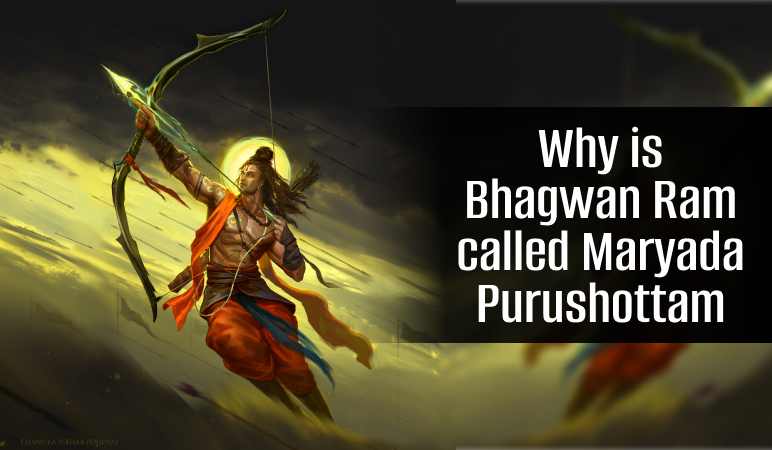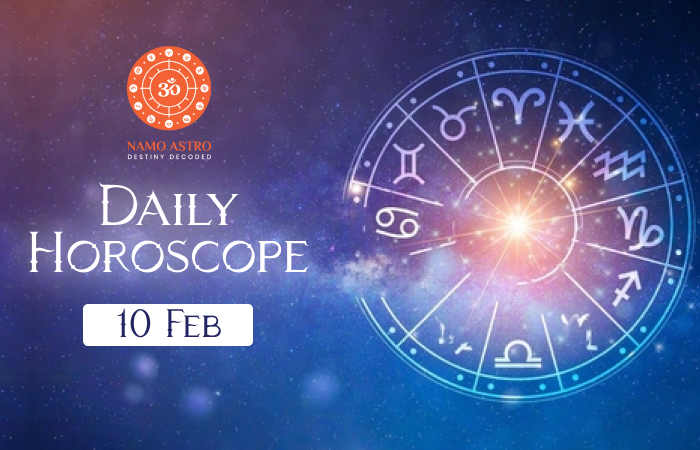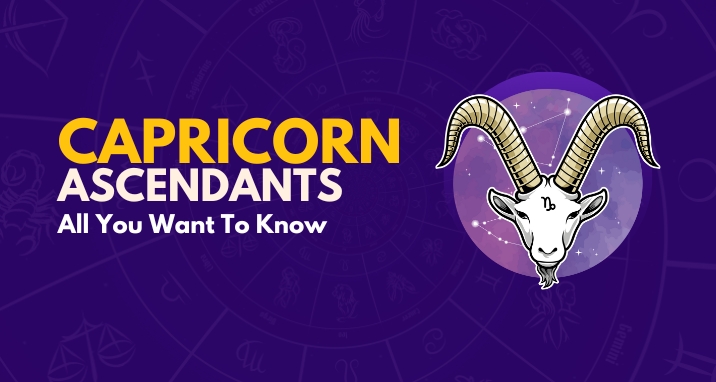Why is Bhagwan Ram called Maryada Purushottam?

Ideals are important in life. They are like the North Star; they guide us towards becoming a better person. And when we think of an ideal personality, the first to come to mind is Maryada Purushottam Prabhu Shri Ram.
Shri Ram is the 7th incarnation of Shri Vishnu and is known as Maryada Purushottam, directly translated from Sanskrit as “foremost amongst all men.” Purushottama (Sanskrit: पुरुषोत्तम, from पुरुष, purusha “spirit” or “male” and उत्तम, uttama, “highest”).
Bhagwan Ram, or Purushottam Ram, is a symbol of courtesy, virtue, and moral values. According to Swami Vivekananda, Shri Ram embodies truth and morality and serves as an ideal son, husband, and king. Shri Ram is believed to have incarnated on earth to combat the forces of evil during the Treta Yug, as per the Ramayana. The epic, originally composed by Valmiki, gained widespread popularity through Tulsidas’ rendition, “Ramcharitmanas,” in the 11th century AD.
Let us see what makes Shri Ram the Maryada Purushottama, and we can learn from him.
What is the meaning of Maryada Purushottama?
Maryada translates to ‘limit,’ and Purushottama means ‘the greater than the greatest man.’ Purusha signifies a person of honour. The following aspects of his personality make him ideal to be followed.
The Ideal
One becomes ideal by following what is hard. And that’s what makes Rama our ideal. He succeeded by handling tough situations well. He always followed the Vedas and the Maryada (decorum in English, though it is not the absolute meaning of Maryada). Shri Ram is a symbol of truth, being an ideal son, husband, and most importantly, a king. He prioritised justice and truth over his own happiness. Shri Ram is seen as a perfect example of good qualities. He was even considered to be born for the betterment of humanity with exceptional qualities.
The following excerpt from Shriramcharitramanas exemplifies that:
Brahm himself, in the lap of Mother Kaushalya:
ब्यापक ब्रह्म निरंजन निर्गुन बिगत बिनोद।
सो अज प्रेम भगति बस कौसल्या कें गोद॥
(श्रीरामचरितमानस १.१९८)
जो सर्वव्यापक, निरंजन (मायारहित), निर्गुण, विनोदरहित और अजन्मे ब्रह्म हैं, वही प्रेम और भक्ति के वश कौसल्या की गोद में (खेल रहे) हैं॥ 198॥
When Shri Ram appears, mother Kaushalya feels immense joy as she cares for and nurtures Brahm, the ultimate force that sustains and protects the entire world. The unborn and all-encompassing Brahm, detached from Maya, untouched by worldly qualities, and free from worldly plays, is embraced by mother Kaushalya, conquered only by love and devotion.
बिप्र धेनु सुर संत हित लीन्ह मनुज अवतार ।
निज इच्छा निर्मित तनु माया गुन गो पार ॥ (श्रीरामचरितमानस १.१९२)
ब्राह्मण, गो, देवता और संतों के लिए भगवान ने मनुष्य का अवतार लिया। वे (अज्ञानमयी, मलिना) माया और उसके गुण (सत, रज, तम) और (बाहरी तथा भीतरी) इंद्रियों से परे हैं। उनका (दिव्य) शरीर अपनी इच्छा से ही बना है (किसी कर्म बंधन से परवश होकर त्रिगुणात्मक भौतिक पदार्थों के द्वारा नहीं)॥ 192॥
Prabhu Shri Ram took on a human form to benefit Brahmins, cows, devas, and sages. They, who are beyond Maya and its qualities (Sat, Raja, Tama), as well as both outer and inner senses. His divine body is created by His own will, not by any karmic bindings to material substances. Conquered by the love and devotion of Manu-Shatrupa, the Brahm, though unborn, chose to be born from mother Kaushalya (incarnation of Shatrupa Ji).
The Ideal Son
Shri Ram is the son of King Dasharatha and the prince of Ayodhya. In a world where family disputes often revolve around ancestral property, Shri Ram chose to give up the throne of Ayodhya to his brother Bharat. This decision was made when Kaikeyi, Dasharatha’s second wife and Bharat’s mother, asked Dasharatha to send Shri Ram into exile.
Dasharatha, though unwilling, could not refuse Kaikeyi’s request. Due to a promise made long ago, he was obligated to fulfill three wishes of his wife. Shri Ram, understanding that the promise couldn’t be revoked, obediently followed his father’s orders and prepared to spend fourteen years in the forest. He would never go against his parents’ wishes under any circumstances.
The Ideal Brother
Shri Ram had three brothers: Bharat, Shatrughna and Lakshman. All three held him in high regard, seeing him as the epitome of perfection, as Shri Ramyana narrates. Even though Bharata was given the throne, Shri Ram continued to care for him just as before. And even Bharat had all the respect and love for his brother. He would visit him in the ashrams, where Shri Ram would offer guidance as an elder brother.
The Ideal Husband
When Mata Sita was abducted by Ravana, Bhagwan Ram did not give up and run away or plead in front of Ravan. He was most powerful, could have easily won any other woman and lived a happy life ever after. But he chose to fight the most powerful warriors and pandits of that time, Ravana and get Mata Sita back. He walked from Panchvati in today’s Nasik to Sri Lanka in the extreme south, built a pool over the mighty ocean and fought a fierce battle against Ravana to get Mata Sita back. Also, he was not suspicious of her, trusted her fully, and took her back to his kingdom with full respect and honour, which was not common in those days when a woman was away from her husband for a long time. Later, when Mata Sita chose to leave the palace after questions were raised about her by a washerman, he made sure she was safe and protected in Maharishi Valmiki’s ashram.
In the days when it was very common to have more than one wife, Bhagwan Ram remained committed to Mata Sita. He did not remarry even when she was living away from him in the Ashram of Valmiki. When he organised Ashwamedha Yagya, he was advised to either bring back Mata Sita from Ashram or remarry, as the Yagya cannot be performed without the company of a life partner. But he did not want to break the pledge of Mata Sita and at the same time, he chose to have Sone ki Sita (a statue of Mata Sita) sit by his side during yajna instead of any advice given to him to remarry or get himself another woman in his life.
Therefore, Bhagwan Ram has proved in every way that he was the most ideal husband to his wife.
The Ideal Friend
Shri Ram is an excellent example of a true friend to the Vanaras. He formed friendships with Sugriva and Hanuman, offering them his support and assistance.
Ram serves as an example of an ideal friend. He meets Nishad Raj Guha, a tribal king, on his way to exile, who arranged the boat and helmsmen who ferried Rama, Lakshman, and Sita across the river Ganga in the Ayodhya Kanda. He not only befriends Guha, the Kevat and Tribal King, and Sugriva, a vanara living in fear of his elder brother Vali but also Vibhishana, the enemy Ravana’s brother who had surrendered, treating him like a friend and brother based on their pact.
Ram’s virtue lies in his ability to see beyond the negatives surrounding others. Despite doubts from Lakshmana and the Vanaras, Ram refuses to view Vibhishana with suspicion. And even though Bhagwan Ram was himself the avatar of Vishnu and the son of Raja Dashratha, he treated all his friends as his equals without any discrimination.
The Ideal King
Above all, Shri Ram was an ideal king. In his reign over Ayodhya, there were no incidents of theft, robbery, or starvation. After completing his exile and becoming the king, his decision-making skills were remarkable. When some people in his kingdom questioned Sita’s chastity and suggested her exile, it was a difficult decision for him, as, being a king, it was his duty to listen to his people and being a husband, it was his duty to protect her from all odds.
Rama sets the standard for ideal leadership. Even today in India, we refer to a great ruler as Ram Rajya. It is believed that when Rama left his body, all the citizens of Ayodhya entered the Sarayu River and attained Moksha.
The Ideal for Morality
Shri Ram embodied truth and justice. He consistently kept his promises to everyone, including gurus, sages, parents, the kingdom, and friends. There’s a saying about him: प्राण जाए पर वचन न जाए (Pran Jaaye Par Vachan Naa Jaaye), meaning ‘Life may go but words must be kept.’ The following 16 attributes make him ideal:
- Sousheelyam (fairness): Shri Ram treated everyone equally and accepted them without conditions.
- Veeryavaan (great warrior): He was a formidable warrior.
- Dharmagnya (upholder of dharma): Shri Ram was strict in adhering to righteous principles.
- Kritagnya (gratitude): He was always grateful to those who helped him and expressed his thanks wholeheartedly.
- Sathyavaakyaha (truthful speaker): Shri Ram never spoke a lie; everything he said was the ultimate truth.
- Drudavrathaha (determined): He stuck to his decisions unwaveringly, such as willingly accepting exile.
- Chaarithrenacha Koyuktaha (impeccable character): Shri Ram had a flawless character without a single blemish.
- Sarvabhuteshu Hitaha (well-wisher of all beings): He wished for the well-being of everyone.
- Vidwaan (knowledgeable): Shri Ram was a master of various subjects, possessing supreme knowledge.
- Samartaha (capable): He was the most competent, capable of accomplishing any given task.
- Priyadarshanaha (handsome and radiant): Described as having long hands and lotus-like eyes, Shri Ram radiated charm.
- Aatmavaankaha (spiritual master): He mastered spiritual discipline and achieved spiritual perfection.
- Jithakrodaha (Master of Emotions): Shri Ram had control over his mind, impulses, senses, and emotions.
- Dyuthimaan (radiant appearance): He possessed a divine glow in his demeanour.
- Anasuyakaha (free from jealousy): Shri Ram was untouched by jealousy; he harboured no envy towards anyone.
- Bibhyati Devah (controlled anger): While generally calm, he displayed unparalleled rage when protecting his loved ones, defeating Ravana swiftly in battle.
His victory and greatness stem not only from being incarnated but also from personal choices and, more importantly, personal sacrifices. That’s why he is ideal. This is precisely why our elders and wise individuals always guide us to follow in his footsteps. Even if we can replicate 10% of his attributes, we can achieve something significant.
Consult or talk to NamoAstro astrologers for personalised birth chart analysis, Kundali matching, astrological remedies and more.









